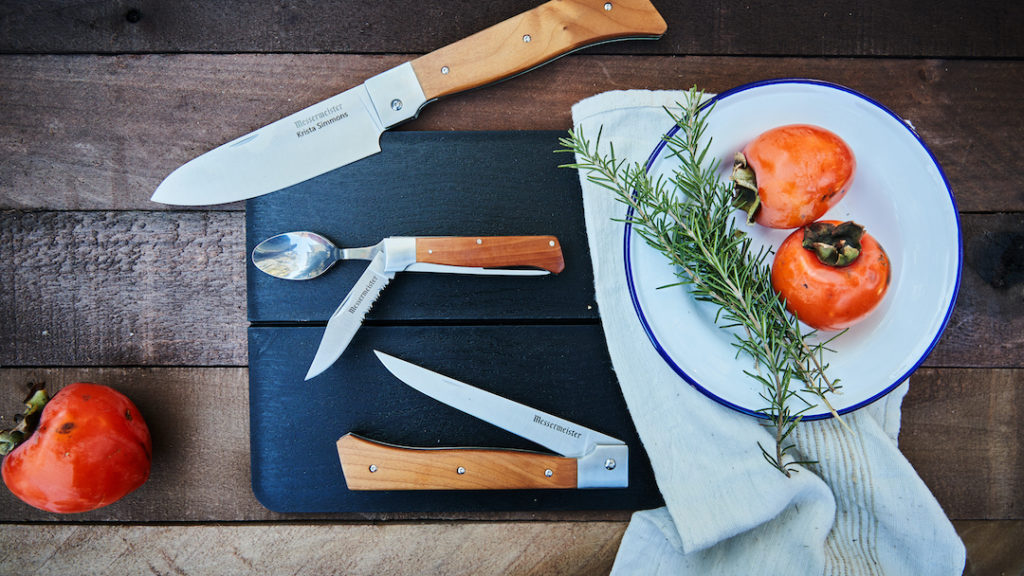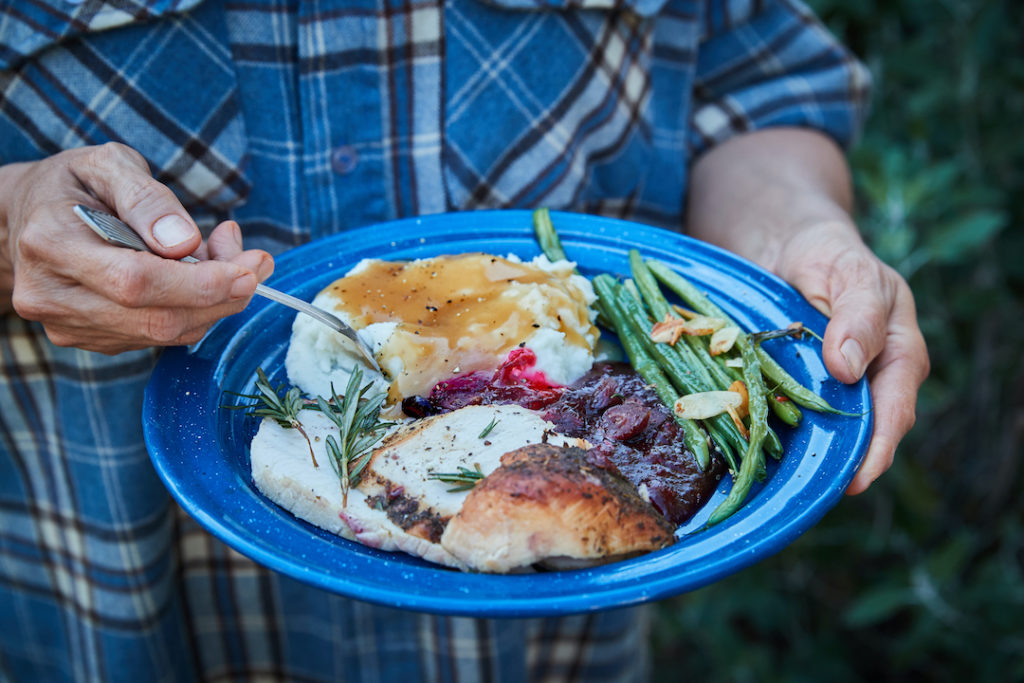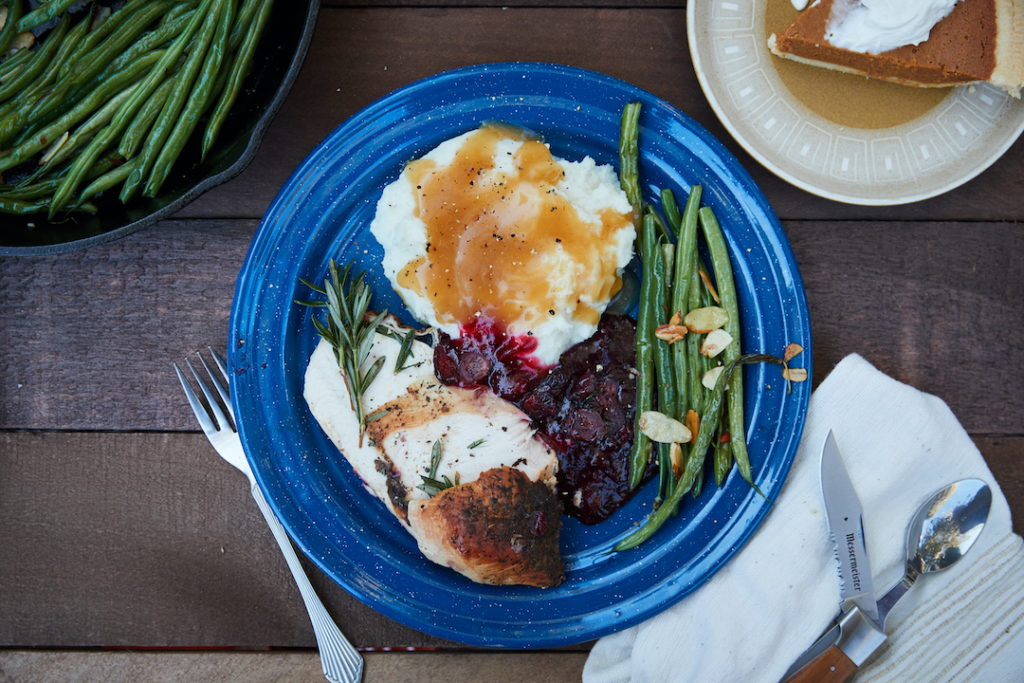
Yes, You Can Cook Your Entire Thanksgiving Dinner over a Campfire (And It’s a Lot Easier Than You’d Think)
Chef Adam Glick shares tips on bringing the bounty into nature for the ultimate outdoor holiday experience.

Thomas J. Story
With inflation being in the state that it is, there’s never been a better time to consider replacing the traditionally overindulgent experience with a more meaningful minimalist ritual, pairing a smaller selection of your favorite Thanksgiving recipes with the inherent gratitude that comes along with being outdoors. But if the idea of cooking a turkey dinner over a campfire sounds intimidating, fret not. Chef Adam Glick is well-seasoned in the practice of bringing a professional chef’s finesse to campfire cooking. Glick, who recently launched a new line of outdoor cutlery and packable chef-grade knives with Messermeister called the Adventure Chef collection, has all the know-how you need to make your Thanksgiving feast in the wild. And it’s surprisingly much simpler than you would expect.
“Cooking outside is part of what makes us happy; it’s a long forgotten tradition that’s part of our ancestry. And it’s really not any more difficult than throwing a barbecue,” he says. “You’re going to make sacrifices, sure. But you’re also not going to have to wash 12 different sets of dishes, and you’ll end up spending more time with your family and loved ones outside.”
Whether your version of that is finding a beach with a firepit or setting up camp on a riverside pullout, bringing the Thanksgiving feast into nature can actually be quite manageable. Rather than trying to make your feast al minute over a campfire, the process is streamlined by utilizing techniques used in classic kitchens that make the day-of seamless so that you can kick back and enjoy the views—and your company. Here are his tips.

Thomas J. Story
Pare It Back
“The essence of being outside is simplifying everything,” says Glick. And that should apply to your Thanksgiving menu, too. Instead of making a dozen different dishes and all the fixins, think about what your cherished family recipes are and cook a couple of your favorites. There’ll still be plenty for leftovers, but you won’t have the headache of having to schlep a massive feast all out to the wilderness. There’ll be less to stash from wildlife, and fewer things to pack out, too.
Break It Down
“Roasting a turkey in its whole form is actually not a good way to do it, no matter where you are,” says Glick. “With the thigh meat being so closely located to the breast meat, the inherent issue is that the breast finishes before the thigh. Under all circumstances aside from deep frying it, the perfect way to cook a turkey is either breaking it in half in a spatchcock or disassembling it.” If you can’t fit a spatchcocked turkey on your cooking surface, break it down. He suggests doing so where the legs and thighs stay together, also known as a leg quarter cut, and the breast is separated.
For the perfectly juicy turkey, Glick suggests using a meat thermometer and pulling the breast off the fire when it hits 155 degrees. It will continue to cook while resting. To test the dark meat, jiggle the bone. When it’s ready, the bone will easily release from meat. He notes that you’ll usually see this on the wings first.

Thomas J. Story
Freeze (and Think) Ahead
“People eating in restaurants rarely understand that the food was actually prepared yesterday. Restaurants with volume are prepping for tomorrow today,” he says. Same goes for your campfire Thanksgiving.
Glick recommends making all of your dishes the day before, then using a common professional kitchen prep hack of stashing the food in zip-top bags, and then laying the items flat and freezing them on a baking sheet. While we normally steer clear of plastic bags, in the scenario of preparing your Thanksgiving outdoors, they’re your new bestie. (Just make sure to save and reuse them, of course.)
Press the air out before laying them on sheet pan so they’re flat. The frozen items will end up in a cooler, so they’re slowly defrosting as you get to your camp spot. An added bonus is that transporting the food this way makes it indestructible when trundling down hills in a four-wheel drive. Even pies benefit from the extra sturdiness of being frozen and transported in this way, and if you opt for cheesecake, it’s actually preferable.
Start Early
No one enjoys being around a stressed-out host, and that’s especially true in the great outdoors. Be sure to start early, take your time, and be patient. “If you think you need to start at 10 a.m., start at 8,” says Glick. That allows for a more relaxed experience for enjoying nature and your guests, too.

Thomas J. Story
Consider Charcoal
There are so many different ways to cook with fire. But no matter what, Glick says, “Whether you’re at a common campground with a waist-high grill or using a firepit, use coals. They don’t smoke you out the way a log does. They are substantially easier to manage the temperature. And they hold that temperature for a greater duration of time. You get the biggest bang for your buck.”
For your Thanksgiving feast, he suggests picking up two large bags of lump charcoal, and prefers Fogo Charcoal or Cowboy Brand. “Gas is just as good too, and easier to manage the temperature. You can also take a Traeger pellet grill anywhere,” he adds.
Don’t Skip the Leftovers
It’s hard to beat a leftover turkey sando smattered with homemade cranberry sauce, but imagine that as a summit snack. Glick suggests packing hoagie rolls to make sandwiches for the next morning along with some tinfoil for easy wrapping. Or, if you want to be really ambitious, bring an extra pie crust along for the ride and make a savory pie. We’re also huge fans of a great hash and shakshouka as campfire brekkie options, and that’d be great when made with leftover turkey in a cast iron, too. Don’t be afraid to get creative, because one thing is certain—great food always tastes better outdoors.
Read the Current Issue Here!
Get one year of Sunset—and all kinds of bonuses—for just $24.95. Subscribe now!
